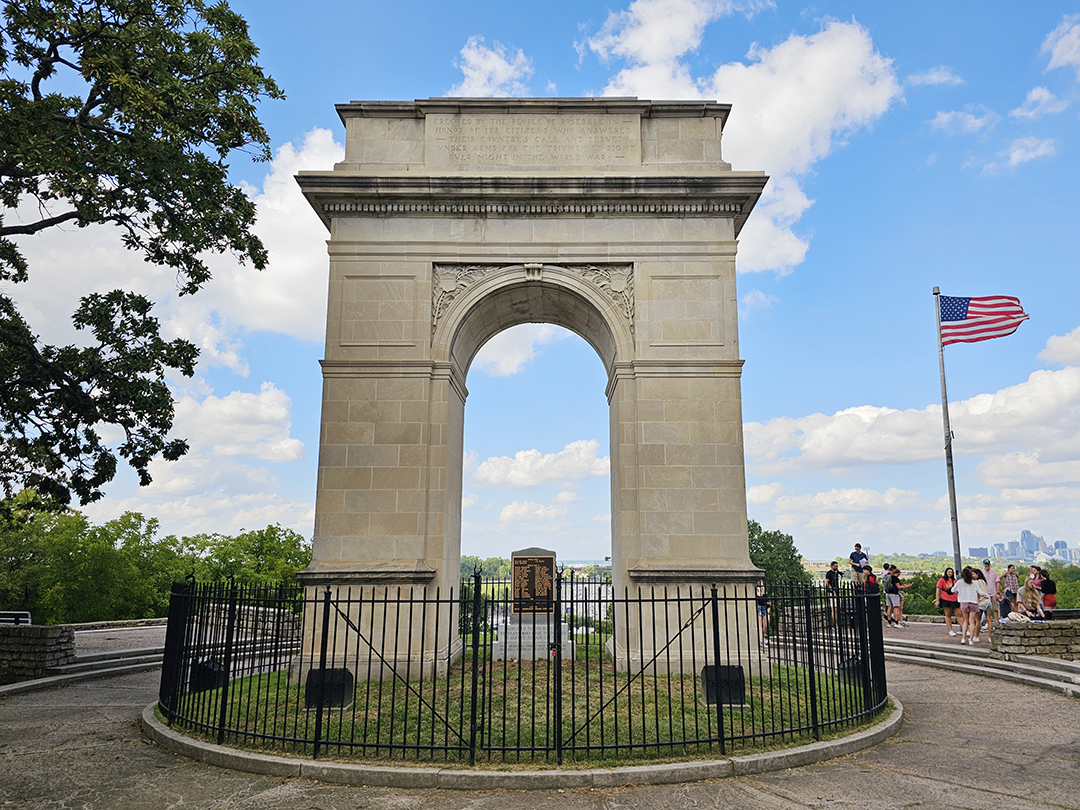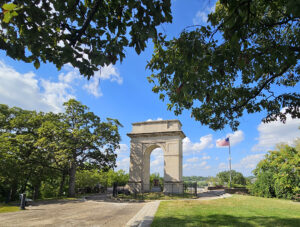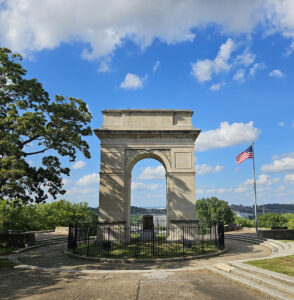Rosedale World War I Memorial Arch

Recruits from the Kansas National Guard became the Rainbow Division, making up the 117th Ammunition Train in World War I. The first six companies were recruited in Rosedale, Kansas, which later became a part of Kansas City, Kansas.
On May 12, 1919, veterans returned to Rosedale to streets decorated in rainbow colors. The name of Hudson Boulevard was changed to Rainbow Boulevard “in honor of the Rosedale boys who gave their lives in France and those who saw service there.”
After World War I ended, the citizens of Rosedale wanted to express their gratitude to the men from their community who had served in the Rainbow Division and other units during the war and perpetuate their memory for future generations.
Architect John Leroy Marshall was a citizen of Rosedale and one of the first students of Architecture at the University of Kansas. He also served during World War I. Marshall was hired to design a memorial. His design for the arch was influenced by the Arc de Triomphe in Paris, France, but more closely resembles the Washington Square Arch in New York City.
General Henri Gourand, the one-armed commander of the 4th French Army, was the guest of honor at the groundbreaking ceremony on July 20, 1923. He turned the first earth with a gold spade.
The Rosedale World War I Memorial Arch was placed on the National Register of Historic Places on August 2, 1977.
The Memorial Monument, placed under the arch in 1993, honors all Rosedale natives who gave their lives in service of their country in World War I, World War II, Korea, and Vietnam. The monument is double-sided with identical plaques and inscriptions on both sides.








